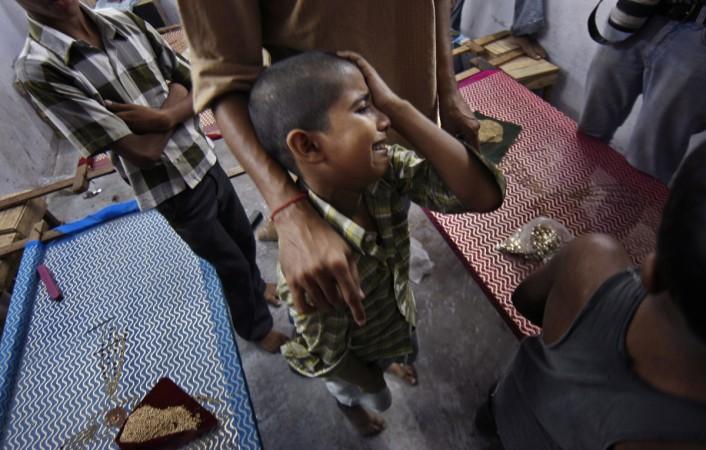
It was 10.30 a.m. on Monday at the BMTC bus stand in Bengaluru, when the field staff of BOSCO's Child Assistance Centre at Majestic bus stand came across a seven-year-old boy in school uniform. He said he came to meet his elder brother and that he had taken permission from his teachers and parents before leaving the school.
But that did not seem to be the truth as he was wearing his school uniform. The field staff decided to take him to the child care centre. Just then another six-year-old child was found loitering at the bus stand. We had a hard time exacting information from him, as he seemed mentally challenged. As we moved to the Bangalore City Railway Station nearby, we found another seven-year-old boy sleeping at the 8th platform. His clothes were soiled, and he started crying after being woken up. He was initially reluctant to go with the Railway CHILDLINE Coordinator and kept saying that he wanted to go to Mandya.
Eventually, when all of them were taken to the BOSCO's Child Assistance Booth at the 4th platform, there were three more children waiting, including a 14-year-old girl. It certainly gave us more than enough reasons to panic as all the incidents happened in a matter of a few minutes â€" six children were rescued in half an hour. According to BOSCO, an average of 20 run-away/unaccompanied children are rescued from railway stations, bus stands and other city areas every day. But the number of children reaching the streets would be many more.
BOSCO, an organisation run by the Salesians of Don BOSCO, is a registered NGO that has been offering services to the young at risk, including children living on the streets, child labourers, abandoned/ orphaned children, victims of drug abuse and child abuse, beggers, rag pickers, etc. since 1980. "We are doing our level best to rescue children and rehabilitate them. Though we rescue and rehabilitate over 7,000 boys and girls a year, the actual number of children reaching the streets would be many more. Where do the rest reach?," asks Fr Mathew Thomas, the Executive Director of Bengaluru Oniyavara Seva Coota (BOSCO).
Chances are high for those children to end up in the wrong hands, he adds. Brokers frequent the areas around the railway station and bus stand to trap such children away from the family. "Most of them will be in a state of bewilderment, thereby exposing their vulnerability. Hence, it becomes easy for the brokers/traffickers to approach them with offers for job, food and shelter and the children easily fall prey to them," says Thomas Paul, programme manager, BOSCO.
The brokers are approached by hotel owners, who want to employ children. This arrangement, which involes commissions for the brokers, happens in broad daylight near the Majestic railway station. While some children are taken to factories, sweets makers, eateries/hotels, automobile workshops and construction sites, others end up with marriage caterers and are employed to cut vegetables and wash plates. Some are used for begging and pick-pocketing. The runaway children come from almost all the states in the country, mostly from Bihar, Orissa, Jharkhand, Chhattisgarh, and West Bengal.
Thomas reveals they are able to rescue children because the in-fights among brokers sometimes results in one group tipping them off against the rival group.
Ramaswamy, the Co-coordinator at BOSCO Railway CHILDLINE, says rescuing children from the railway station is becoming a strenuous task as most children don't even reach the main railway stations now. "To avoid us, the brokers/traffickers make them get down at the adjacent railway stations. From there, they take them away by autorickshaw or taxi," he says.
Besides, many are brought from other states in the name of education to get them enrolled in religious institutions, or under the name of some orphanages. "In such cases our intervention gets difficult as they would produce everything, including an identity card and other necessary forms. We could only intervene in those cases when we get a cue that the children are not aware of the contractors who have brought them here," he points out, adding that in many cases they are not able to register cases against the traffickers as it is difficult to identify the trafficker. If at all cases are registered it stops with the lodging of the FIR.






!['Kaise ho bhai..': PM Modi shook hands with Akshay Kumar at a media summit in Delhi [Watch]](https://data1.ibtimes.co.in/en/full/806317/kaise-ho-bhai-pm-modi-shook-hands-akshay-kumar-media-summit-delhi-watch.jpg?w=220&h=135)


